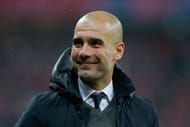Marcelo Bielsa during his Marseille daysWith a managerial career spanning more than 25 years, Marcelo Bielsa has stamped his mark on both the domestic and international stage, coaching in South America and Europe respectively.Following a mere three-year playing tenure, Bielsa went on to manage Argentinian outfit Newell’s Old Boys, before taking charge of a further six clubs and two nations, Argentina and Chile; the latter of which he practically revolutionised.The now 60-year-old built up a win percentage of 51.52% in his time with La Roja, leading them to an appearance at the 2010 World Cup in South Africa, following absences from the two previous editions of the tournament.His popularity was unrivalled and while his results proved pleasing, it has been the manner in which he has set up teams that have really caught the eye.Eager to instil teams with a hunger for attacking football, Bielsa has a reverence for experimentation in football. From replicating forecasted matchday conditions by tweaking the training pitch, to marking player boots in order to outline where they should connect with the ball, the Argentine lives and breathes the beautiful game and is considered as a tactical pioneer in the modern football world, hence why so many have opted to take a leaf out of his book.
#1 Jorge Sampaoli

Where better to start than with the man who superseded Bielsa as Chile manager in 2012. Sampaoli, a youth player at Newell’s Old Boys when Bielsa played for their firsts, swiftly adopted the aforementioned Argentine’s habit of trawling through tactical tapes, while the 3-3-1-3 formation had become so ingrained within the Chilean DNA that even if Sampaoli wished to dislodge it, he could not have done.
Alternatively, he thrived on it. Much like Bielsa’s side, Sampaoli’s Chile embraced a fluid transition from defence to attack, while also incorporating an intense pressing game high up the pitch.
Of course, there were tweaks. On occasion, Sampaoli did switch to a 4-2-1-3 set-up to cater for his opponents and, while Bielsa stuck with a single pivot in midfield, Sampaoli preferred an amalgamation of different qualities through the middle from Arturo Vidal’s raw power and energy to Felipe Gutiérrez’s fluid movement in the final third.
Sampaoli recently resigned from his post as Chile coach but, in his time with the nation, he built on the progress Bielsa made. The 55-year-old lead the country to the Copa America title on home soil, while he was included on a three-man shortlist for the 2015 FIFA World Coach of the Year.
#2 Mauricio Pochettino

Since entering the English scene, Pochettino has barely put a foot wrong. Initially, despite success with Espanyol, the now 44-year-old’s appointment as manager of Southampton was heavily lambasted.
Pochettino quickly left his critics with egg on their face. His focus on direct, attacking football improved the Saints’ performances ten-fold while his desire to utilise the youth available lead to rapid development within the club’s younger personnel.
All of these qualities transpired from his time around Bielsa in his time with, you guessed it, Newell’s Old Boys. Upon his move to Tottenham in 2014, the Argentinian retained his focus on bringing through young talent, a prominent ideology of Bielsa, but also employed a not dissimilar tactical manifesto to him.
Like with Bielsa, the holding midfielder is vital for Pochettino. By ensuring one middle-man keeps disciplined and anchors down a position through the middle, the centre-backs can split and merge forwards to bolster the numbers in attack. While the defenders aid the attack, the forwards do the reverse, contributing to a philosophy of Bielsa that everyone works to win the ball back as quickly as possible.
Bielsa adored the un enganche y tres punta (one playmaker and three forwards) set-up which Pochettino has also employed, with the in-form Dele Alli occupying the former and the trio of Kane, Eriksen and Lamela forming the latter.
#3 Eduardo Berizzo

Intensity. Intensity. Intensity. A word that Bielsa inscribed into the coaching doctrine of Berizzo from a young age. The 46-year-old is currently managing in La Liga with Celta Vigo and if there’s one thing he’s borrowed from Bielsa’s box of managerial tricks, it’s pressing with aggression and, of course, intensity.
Once again Celta Vigo operate with a defensive midfielder dropping back, allowing defenders to advance while they also gain a stranglehold in possession during most of their outings. Regaining possession far up the field and quickly is paramount for Os Célticos, just as it always has been for Bielsa. In fact, Celta de Vigo have been known to press so highly, that playing a short pass is no longer an option for the opposing goalkeeper, meaning he must launch it down the field, increasing Celta’s chances of getting back on the ball.
The success of this adopted system is clear to see. Celta Vigo are currently lingering in and around the Europa League spots and they are one of only two sides to have broken the resolve of runaway league leaders Barcelona, who they thumped 4-1 back in September.
They may not utilise the oddity of a 3-3-1-3 formation which Bielsa championed, but the principle of four attackers still applies, as Berizzo frequently chooses the 4-2-3-1 formation, alternating between a catalogue of eager attacking talents.
#4 Gerardo Martino

An electric talent embedded within the irrepressible Newell’s Old Boys team of the 1990s, Gerardo Martino was a favourite of Bielsa’s and offers a more pragmatic blend of Bielsa’s emotionally-driven philosophy and meticulous thinking.
His game was similarly built on hard pressing, physical brawn and neat passes, but such traits did not flourish as a result of desire and instinct like they did with Bielsa. Martino installed these attitudes at an array of different clubs, none more so than with Club Libertad in Paraguay, who he lead to three titles over two separate spells in charge.
During his Barcelona tenure, Martino switched fields on many an occasion and he developed a counter to the ‘parking the bus’ method so many sides attempted against the Catalans. This method expelled a Bielsa-style aroma. Width was the central component. Players like Neymar and Dani Alves would flirt with the touchline, stretching the defence and opening up space to be exposed by Lionel Messi and others in the attacking unit.
As with Pochettino and, to a lesser extent, Berizzo, Martino too enjoys attacking directly like Bielsa did. While aesthetics and ‘tiki-taka’ are easy on the eye, they’re not always incredibly effective and Bielsa himself knew this and so the father of the beautiful passing game occasionally went direct too, in order to ensure possession would not be wasted.
#5 Pep Guardiola

Let us close with a rather controversial inclusion. The fact Pep has ascertained his own ground-breaking legacy renders him far above the title of a ‘deciple’, but there are aspects of his approach to football that are synonymous with those of Marcelo Bielsa’s.
Prior to his appointment as Barcelona manager in 2008, Pep Guardiola saught advice from ‘El Loco’, questioning whether management was right for him and what the best systems were. They talked through the night and what an impact that discussion may well have had.
Whatever many may believe, ‘tiki-taka’ is not something that Guardiola favours. On the contrary, he despises it. In an interview with the Telegraph, Guardiola claimed "I loathe all that passing for the sake of it, all that tiki-taka. It's so much rubbish and has no purpose.” He continues, “You have to pass the ball with a clear intention, with the aim of making it into the opposition's goal. It's not about passing for the sake of it."
From Bielsa’s scrupulous analysis of the attacking game and his desire to win the ball high up the pitch, it is apparent his style applies by the same theory as Guardiola’s.
